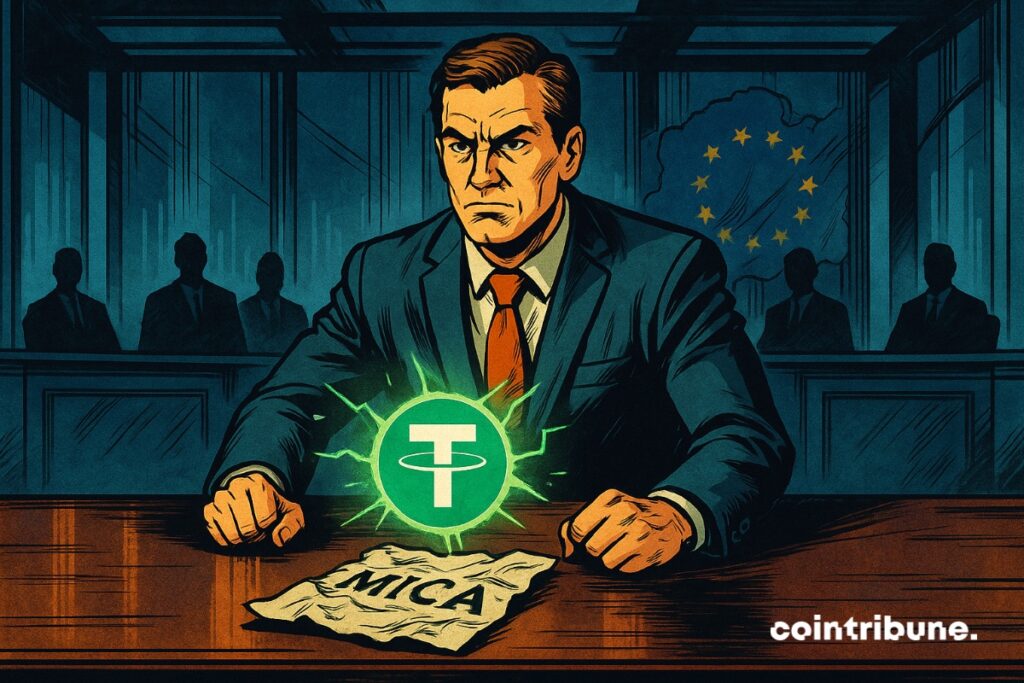Tether’s CEO Defies MiCA Regulations—Here’s Why It Matters
The stablecoin giant won’t play by Europe’s new crypto rules—and the move could send shockwaves through the market.
MiCA’s looming compliance deadlines? Not Tether’s problem. CEO Paolo Ardoino openly rejects the EU’s regulatory framework, calling it ’innovation-stifling bureaucracy.’ Meanwhile, rivals scramble to adjust—classic crypto theater.
Behind the defiance: liquidity control. Tether’s USDT dominates global trading volumes. Why bend to Brussels when you’re the de facto reserve currency of crypto? (Cue eye-roll from traditional finance suits.)
The fallout? A regulatory gray zone that could either destabilize the ecosystem or—let’s be real—create yet another arbitrage opportunity for hedge funds. Stay tuned.

In Brief
- Tether’s CEO rejects USDT registration under the European MiCA regulation.
- Tether’s CEO deems MiCA requirements dangerous for banks and contrary to financial freedom.
- The EU sees USDT as a threat to its monetary sovereignty against the dollar.
- Several platforms remove USDT in Europe, reshuffling the stablecoin market.
A Regulatory Framework Too Restrictive for Tether
In a bold move, Tether CEO Paolo Ardoino confirmed that the company will not seek to comply with the MiCA regulation for its USDT stablecoin, despite the new crypto rules coming into effect in Europe. At the Token2049 summit in Dubai, he denounced the framework as “dangerous” for stablecoins, stating it could weaken European banks.
According to the Tether leader, MiCA’s requirements — such as the obligation to place 60% of stablecoin reserves in insured bank deposits within the EU — pose major risks to the European banking system. “I must protect our 400 million users worldwide, not just Europeans,” he declared. He accuses the European Central Bank of using MiCA as leverage to promote the digital euro and restrict citizens’ financial freedom.
Towards Marginalization in Europe?
Europe fears Tether’s growing influence, as behind its stablecoin lies a geopolitical threat: it is backed by the US dollar, reinforcing the greenback’s dominance at the very heart of the eurozone. By allowing USDT to circulate freely, Brussels fears a loss of monetary sovereignty, increased dependence on the United States, and weakening of the digital euro project.
MiCA thus becomes a regulatory barrier to limit the expansion of an asset considered a financial influence weapon. Crypto platforms like Kraken and Binance responded by removing several stablecoins, including USDT, to stay compliant with this regulation. This could curb the use of Tether, the world’s most capitalized stablecoin in Europe, forcing players to turn to other regulated cryptos like Bitcoin or Ethereum.
BTCUSD chart by TradingViewTether’s refusal to adopt MiCA illustrates the standoff between European regulation and crypto giants. This decision could disrupt the balance of stablecoins in the EU, deepen the regulatory divide, and push platforms to reconsider their strategies amid a market in deep reconfiguration.
Maximize your Cointribune experience with our "Read to Earn" program! For every article you read, earn points and access exclusive rewards. Sign up now and start earning benefits.

